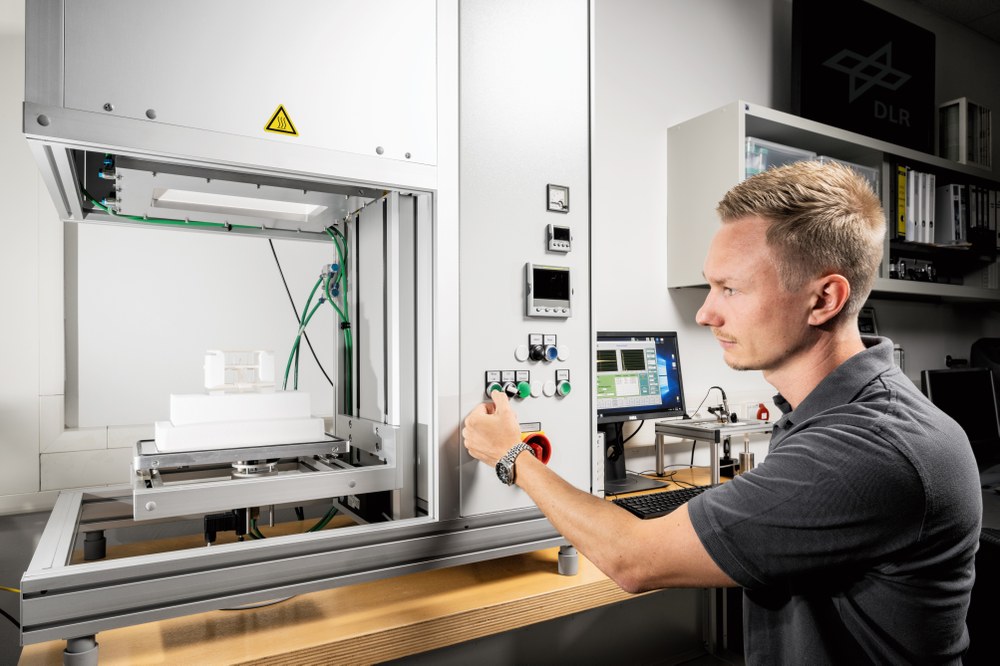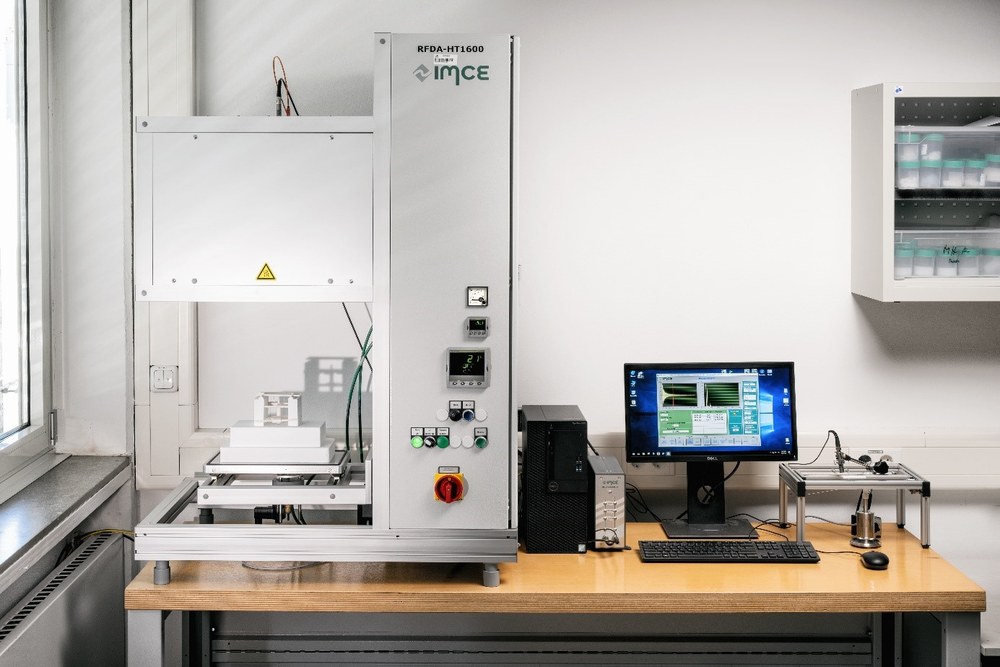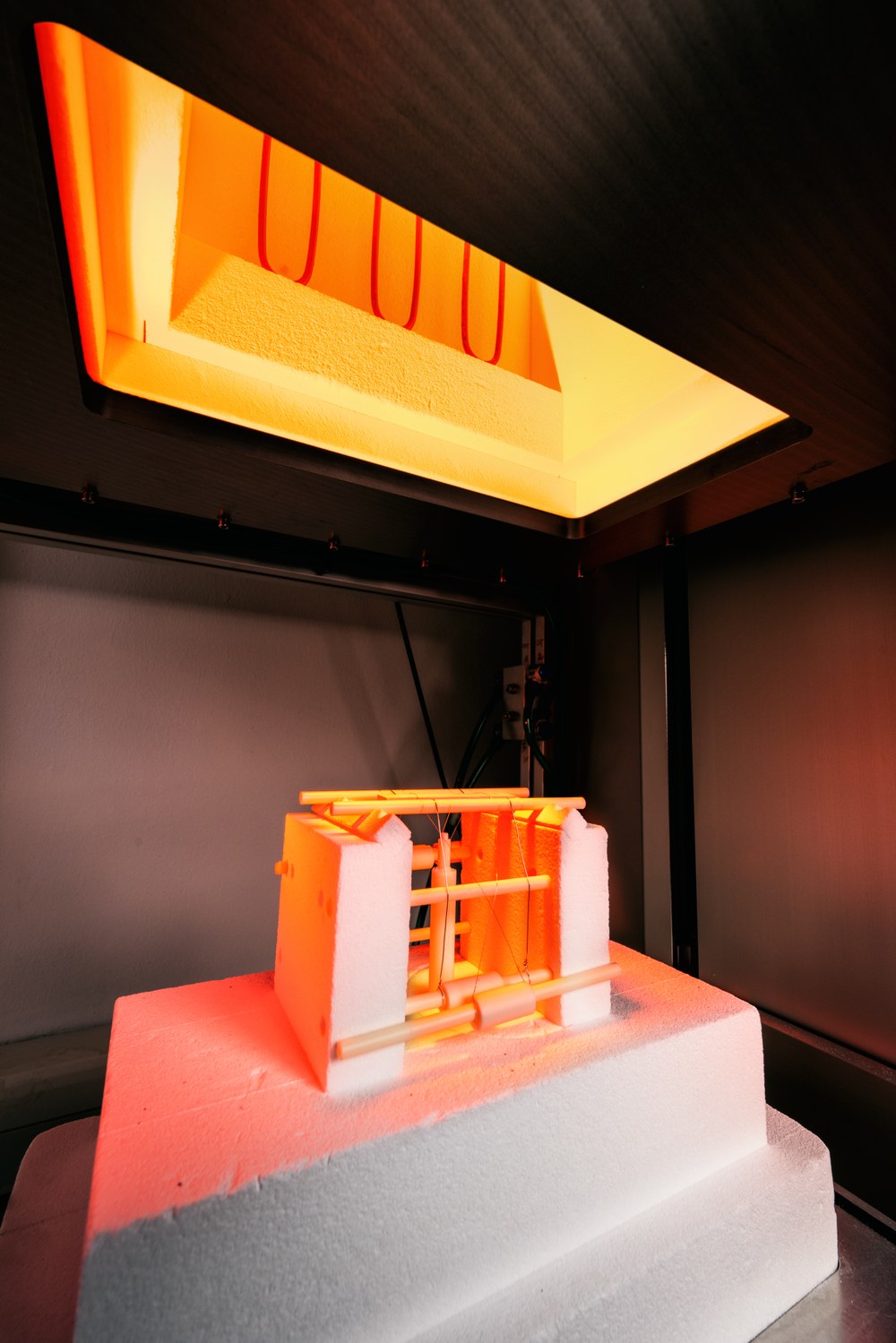Pulse Excitation Technique



The impulse excitation technique (IET) is a method with which material properties can be determined very quickly using just a sound sample, i.e. without destroying the test specimen. For this purpose, the acoustic properties of the samples are determined at room or high temperatures. Direction-dependent, material-specific parameters can be calculated from the data. In addition, statements can be made about the time-dependent material behavior at high temperatures, which is of great interest for the later use of the materials.
Function and range of services:
During the measurement, the test specimen is automatically pushed with a small projectile, the resulting noise is recorded with a microphone and the resonance frequency is determined from the signal. From this frequency, important elastic constants such as elastic modulus, shear modulus and Poisson's ratio can be calculated for material and component development. The measurements can be carried out in a very wide temperature range from 20 °C to 1600 °C. The recorded measurement curves provide information about material behavior at high temperatures, such as changes in stiffness and possible material transformations, such as sintering effects and chemical reactions in the material, which are of great interest for material development with a view to later application.
Application examples:
The IET helps us to develop new materials more quickly that are even more temperature-resistant while at the same time exhibiting high strength and damage tolerance. The sound sample can also provide information about entire components, such as new turbine blades or brake discs made of fiber-reinforced composite ceramics, as to whether they have weak points. The resonance frequencies of the components are determined and compared with a component whose properties are known like a fingerprint. If the measured resonance frequencies deviate significantly from each other, this indicates a defect.
In the EU project AllOxITD, our Structural and Functional Ceramics department used the system for the non-destructive determination of direction-dependent material characteristics of an oxide ceramic fiber composite material for the design and simulation of future engine components.
System characteristics
Stimulus | manual or automated |
Temperature range | RT - 1600 °C |
Heating/cooling rate | 1 - 5 K/min |
Temperature segments | Heating up/cooling down & holding phases freely selectable |
Atmosphere | Air (optionally with inert gas) |
Frequency range | 10Hz - 100kHz |
If you would like to find out more about the possible uses of our system, please contact us!
Kontakt
Jan Roßdeutscher
